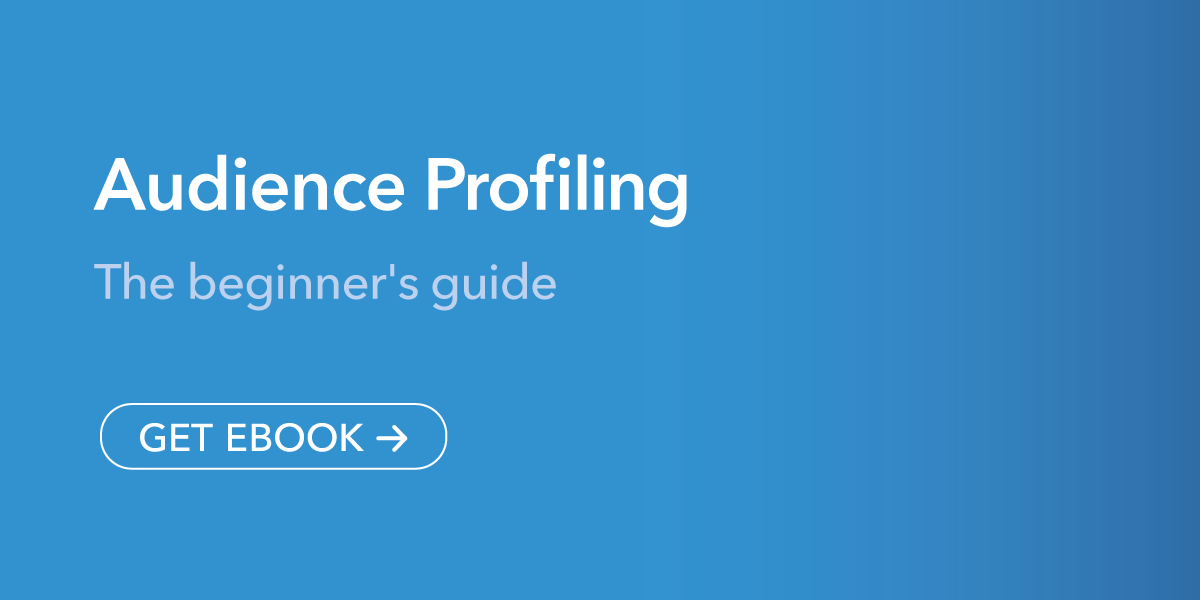Consumers no longer respond to blanket messaging from brands; they expect a personalized experience at every single touchpoint.
This is where audience profiling comes in.
By gathering complex data and insights into your target audience, you can define, segment and profile them.
This process goes miles beyond basic demographics and gives you everything you need to start targeting your consumers effectively.
Audience profiling consists of four stages:
- Segmentation
- Messaging
- Engagement
- Measurement
Here, as part of our audience profiling series, we’ll delve into details of the first (and arguably most essential) stage: segmentation.
What is market segmentation?
Traditionally, market segmentation involved splitting consumers into groups based on basic demographic data like location, age or gender.
It was the starting point for any brand looking to better understand their audience and used to be the only way to drive more targeted campaigns.
Done right, segmentation can be used to better understand your business and customers, and to attract new audiences.
Nowadays, the process goes much deeper.
With the help of global data that allows for a true picture of consumer behaviors and perceptions on a massive scale, you can create intricately detailed profiles of your audience via audience segmentation.
These data-driven profiles include aspects like lifestyles, attitudes, self-perceptions and interests, making them more in-depth than ever.
So what exactly do these new segmentation techniques look like, and what does it take to get them right?
Buyer personas
Buyer personas have long been an imperative part of segmentation, but they’re now being taken to another level.
Thanks to audience profiling driven by data, much more complex pen portraits of your consumers are possible to achieve.
These portraits map segments in minute detail, outlining the interests, attitudes and perceptions that are crucial to target.
But intricacy doesn’t automatically mean more time and resources are needed. Using a tool like GlobalWebIndex, you can easily query global data representing 2.6 billion consumers, pulling only the key stats that apply to your target audience.
Consumer journey maps
The average consumer journey has changed drastically.
Consumers are now using a multitude of devices, channels and platforms along the path to purchase, giving them more power to make decisions.
Instead of simply following a straight line, they’re jumping off and straight back on as and when they please.
As these journeys become more fragmented, consumers are paradoxically demanding more consistency, and more tailored brand experiences.
Using audience profiling, you can ensure a seamless customer experience with the help of reliable journey maps. With these at hand, you know where, when and why your consumers are most likely to interact with you, what the gaps are, and what touchpoints are most important.
Getting segmentation right
Use a single source of data. With the abundance of data now available, you can afford to be picky. Choose the source of consumer research that promises the data most relevant to you, and stick to it to ensure you’re not losing detail or creating multiple versions of the truth.
Know what you’re looking for. Data can be overwhelming and unhelpful if you don’t have a plan of action. When you have an aim in mind, you can create actionable and well-executed insights and avoid getting lost in the research.
Split your segments to your objectives. Not all aspects available will be relevant to the objectives you’re working towards. Just as you need to tailor your marketing, tailor your segments to what you’re trying to achieve to avoid any unnecessary noise.
Start with personas. The first thing extensive data should be used for is creating in-depth buyer personas. This way, you can truly trust that you know your target audience and the reasonings behind their behaviors.
Track the right footprints. When you know who your target consumers are, you can find out what touchpoints they’re engaging with and why through detailed and reliable consumer journey maps.
Keep searching. Consumers’ behaviors and opinions change, and many brands that currently rule the market didn’t exist a few years ago. Your profiles and segments need to be consistently updated to reflect this, and reassure you that you’re still targeting the right people, in the right way.
Next step: Crafting a message that converts.



